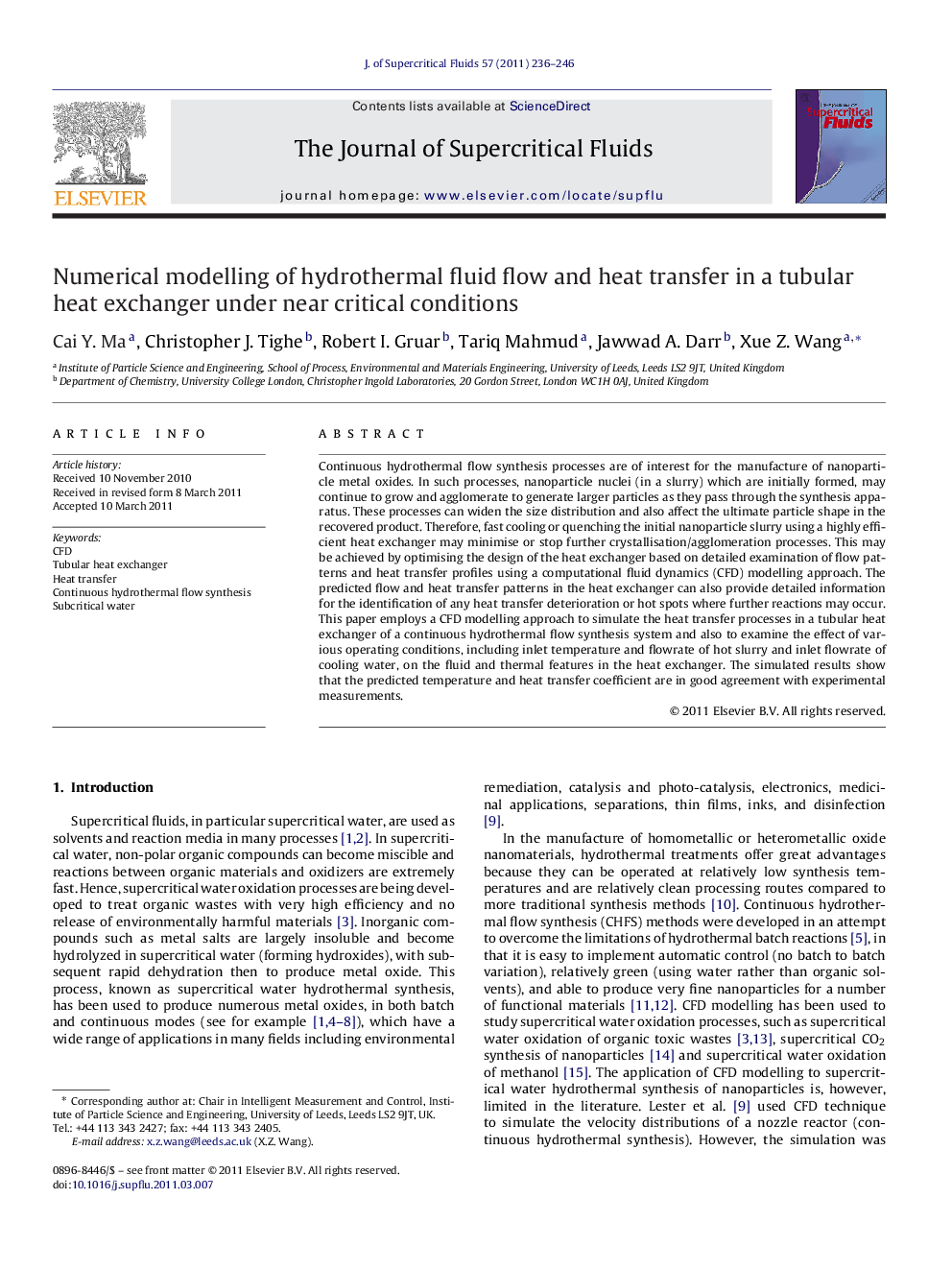| Article ID | Journal | Published Year | Pages | File Type |
|---|---|---|---|---|
| 231209 | The Journal of Supercritical Fluids | 2011 | 11 Pages |
Continuous hydrothermal flow synthesis processes are of interest for the manufacture of nanoparticle metal oxides. In such processes, nanoparticle nuclei (in a slurry) which are initially formed, may continue to grow and agglomerate to generate larger particles as they pass through the synthesis apparatus. These processes can widen the size distribution and also affect the ultimate particle shape in the recovered product. Therefore, fast cooling or quenching the initial nanoparticle slurry using a highly efficient heat exchanger may minimise or stop further crystallisation/agglomeration processes. This may be achieved by optimising the design of the heat exchanger based on detailed examination of flow patterns and heat transfer profiles using a computational fluid dynamics (CFD) modelling approach. The predicted flow and heat transfer patterns in the heat exchanger can also provide detailed information for the identification of any heat transfer deterioration or hot spots where further reactions may occur. This paper employs a CFD modelling approach to simulate the heat transfer processes in a tubular heat exchanger of a continuous hydrothermal flow synthesis system and also to examine the effect of various operating conditions, including inlet temperature and flowrate of hot slurry and inlet flowrate of cooling water, on the fluid and thermal features in the heat exchanger. The simulated results show that the predicted temperature and heat transfer coefficient are in good agreement with experimental measurements.
Graphical abstractFigure optionsDownload full-size imageDownload as PowerPoint slideHighlights► CFD is a useful tool for fully understanding of the performance of a heat exchanger in a CHFS system. ► Recirculation and stagnant regions are identified for design and performance improvement. ► Simulations and measurements are in good agreement over a wide range of operating conditions. ► Some guidances for the desgin and scaling-up of high efficient heat exchangers are provided.
